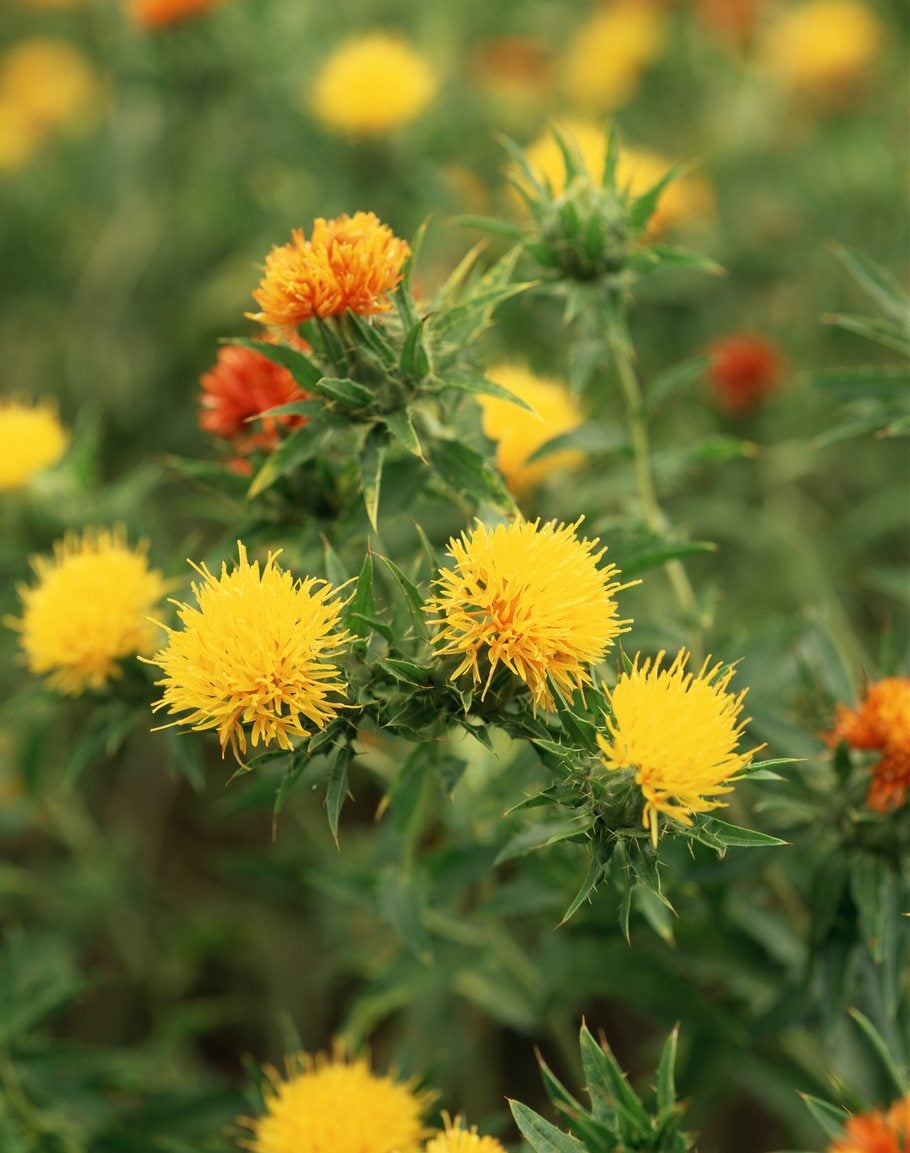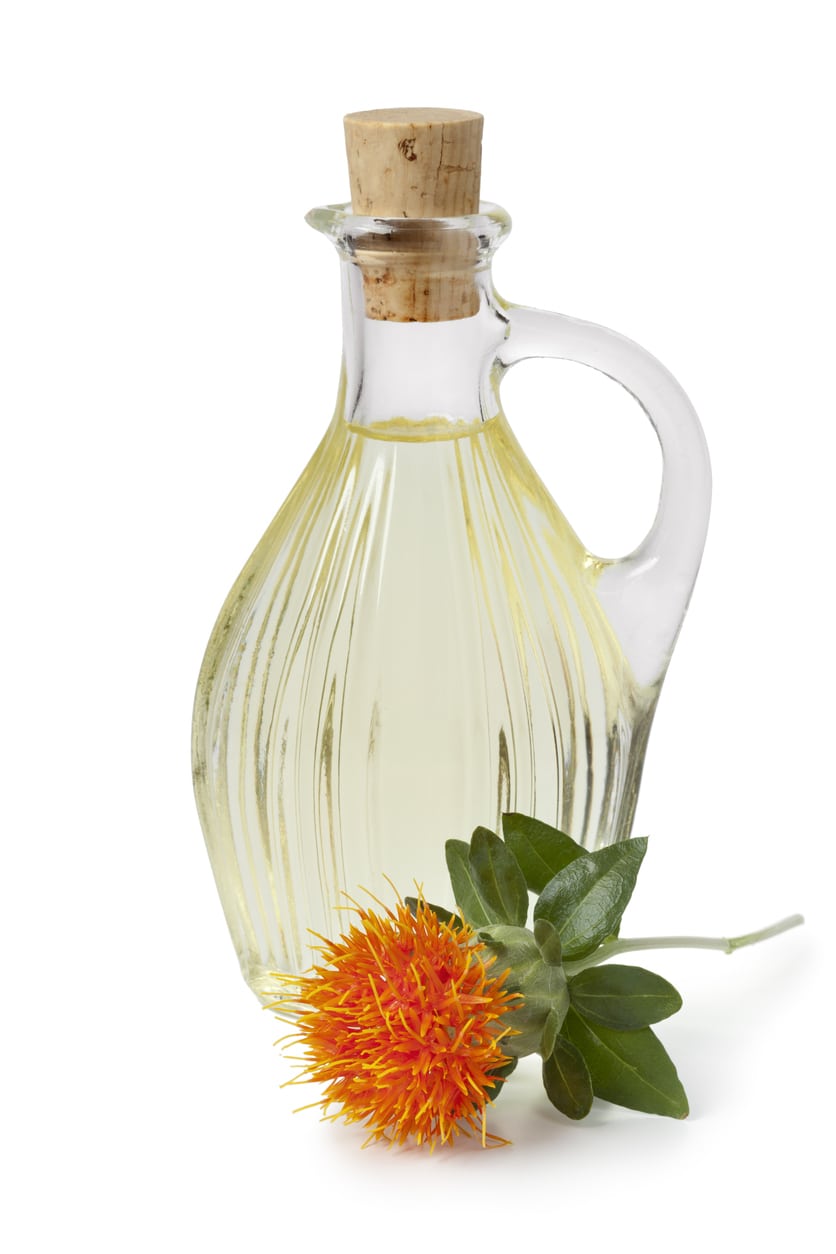Picking Safflower Heads: How To Harvest Safflower Plants


Safflowers are more than just cheerful, bright flowers that add a sunny air to your garden. They can be a crop too, since the seeds are used to make oil. If you want to learn more about the benefits of a safflower harvest, this article will help. We’ll give you information on harvesting safflower plants and tips on when to pick safflowers.
Safflower Harvest Info
Safflowers (Carthamus tinctorius) deserve a spot in your garden just for their pretty blossoms, bright as marigolds. They are annuals that turn into small bushes with sturdy stems up to 3 feet (1 m.) tall. Each safflower stem is topped with a big blossom that combines multiple florets in shades from pale yellow to red-orange. These flowers are magnets for bees but also make excellent cut flowers. They are also one part of a potential safflower harvest, since both the petals and young foliage can be used in salads. Although the bright colors of the safflower blossoms used to be used for dyes, the main reason people are picking safflower heads these days is for the seeds. They are rich in fatty acids and many people find them delicious. You can also collect seeds to grow safflowers the following year. The seeds are used commercially to make safflower oil. This is a big business in some areas, but gardeners can also start harvesting safflower plants for this purpose.
When and How to Harvest Safflowers
How to harvest safflowers depends on what use you intend to make of the plants. If you wish to use the petals in salads, you can start harvesting as the blossoms open. Just cut them off and take them into the kitchen. If you plan to use shoots and tender foliage in salads, just use garden scissors to remove some. On the other hand, to harvest the seeds, you’ll want to remove ripe seed heads carefully. If you are wondering when to pick safflowers for seeds, you’ll want to wait until fall to start harvesting safflower plants. You can start picking safflower heads when the foliage browns and withers. Once the stalk and leaves are brittle, that’s when to pick safflowers. Just cut off the heads carefully and deposit them in a container or jar. Then break the heads open and separate the seeds from the chaff. Store the seeds in a cool, dry location. If you intend to use them for planting, wait until the following spring, then sow them in the garden after the last frost. If you want to make safflower oil, you’ll probably want to invest in threshing and winnowing equipment.
Gardening tips, videos, info and more delivered right to your inbox!
Sign up for the Gardening Know How newsletter today and receive a free copy of our e-book "How to Grow Delicious Tomatoes".

Teo Spengler is a master gardener and a docent at the San Francisco Botanical Garden, where she hosts public tours. She has studied horticulture and written about nature, trees, plants, and gardening for more than two decades. Her extended family includes some 30 houseplants and hundreds of outdoor plants, including 250 trees, which are her main passion. Spengler currently splits her life between San Francisco and the French Basque Country, though she was raised in Alaska, giving her experience of gardening in a range of climates.
-
 Looking For Plants To Give You The Soft And Fuzzies? Try These 5 Fuzzy Leaf Plant Options
Looking For Plants To Give You The Soft And Fuzzies? Try These 5 Fuzzy Leaf Plant OptionsLovers of texture, drama, silver foliage and tactile plants will adore these special sensory garden additions. These fuzzy leaf plant options will leave you all aglow
By Susan Albert
-
 Get Ready For A Summer Of Hummers! Grow These Full Sun Hummingbird Plants and Flowers
Get Ready For A Summer Of Hummers! Grow These Full Sun Hummingbird Plants and FlowersIf you’re lucky enough to enjoy a sunny backyard, make sure you are maxing out on your pollinator opportunities and grow these full sun hummingbird plants and flowers
By Tonya Barnett
-
 Safflower Information – How To Grow Safflower Plants In The Garden
Safflower Information – How To Grow Safflower Plants In The GardenSafflower is predominantly grown for its oils. Safflower?s growing requirements are uniquely suited for arid regions. The following article contains safflower information on how to grow and care for safflower plants.
By Amy Grant
-
 What Is Safflower Oil – Uses And Benefits Of Safflower Oil
What Is Safflower Oil – Uses And Benefits Of Safflower OilWhere does safflower oil come from - a flower, a vegetable? Are there any health benefits to safflower oil? Inquiring minds want to know, so click the following safflower oil information for answers to these questions as well as the uses for safflower oil.
By Amy Grant